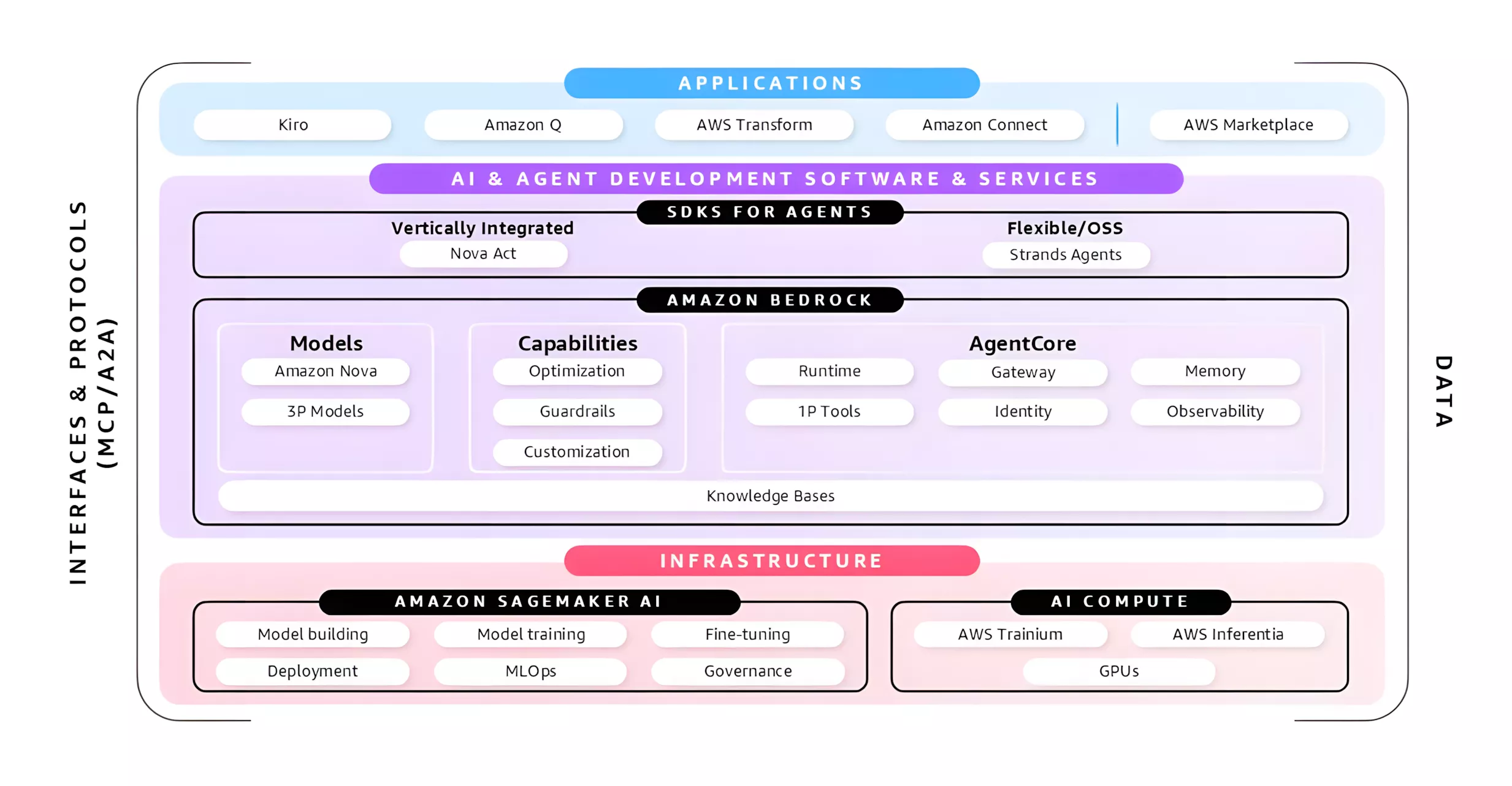Editor's take: AI agents have unquestionably become a hot topic among the largest tech vendors, as Amazon's recent event in New York City once again demonstrated. However, as awareness of the complexities involved in creating and widely deploying agents has grown, so too has the number of questions about how to make it all work.
At AWS Summit, Amazon's cloud computing division addressed these challenges head-on, unveiling a broad range of offerings that include development and deployment tools for agents, as well as a new marketplace where customers can purchase ready-made agent products. Taken together, these announcements represent a comprehensive vision that AWS hopes will position it as a compelling platform for companies looking to integrate agents into their environments, regardless of their level of IT sophistication.
One of the key offerings AWS introduced was Amazon Bedrock AgentCore, a suite of services for building custom agents that can leverage a wide variety of models and agent-building platforms, including open-source options such as Langchain, CrewAI, and LlamaIndex.
In addition, AWS launched its own open-source agent-building tool called Strands Agents. As AWS Vice President Swami Sivasubramanian noted in his keynote, agents are more than just the latest AI buzzword – they represent a fundamental rethinking of how software applications are built, distributed, and used. That makes tools like Strands Agents critical to the future of software and the platforms it runs on.
Key components of Bedrock AgentCore include a runtime environment for agents that integrates security, reliability, and scalability. One of the major questions surrounding agents is the potential impact – both positive and negative – they can have in a given environment due to their autonomous nature.
To help establish trust, Amazon has integrated a series of guardrails and relies on its more than ten-year-old Lambda serverless architecture to run these agents. Additionally, AgentCore Identity provides identity verification capabilities, allowing integration with popular commercial and open-source authentication platforms such as OAuth. Another key service is AgentCore Observability, which helps organizations track agent performance, review data access, and more.
Data access is another crucial factor in optimizing agent performance. AgentCore Gateway offers tools to connect to various APIs and systems to enable these workflows. Amazon is also supporting the MCP (Model Context Protocol) and A2A (Agent to Agent) standards through Gateway, giving companies greater flexibility in the types of data sources, applications, and services they can connect to.
Another core expectation for agents is the ability to build on prior interactions by using both short-term and long-term memory.
Another core expectation for agents is the ability to build on prior interactions by using both short-term and long-term memory. The AgentCore Memory service simplifies the creation of these often complex memory structures, enabling developers to deliver more compelling and effective agentic experiences. Additionally, Amazon introduced AgentCore Code Interpreter, which allows companies to visualize how agent code processes data and handles more complex interactions.
Beyond agent-building capabilities, AWS announced several tools to assist with the creation and fine-tuning of AI models used in agentic applications. For its Nova family of foundation models, Amazon introduced Nova Act, which supports autonomous actions within browsers. Given the central role that browser-based applications and search play in many workflows, this functionality is likely to be widely used in agentic AI applications.
The AgentCore Browser service provides this capability within the AgentCore platform. Furthermore, because AgentCore supports multiple models across an agentic workflow, organizations can use Nova Act for certain tasks while employing other large language models for more reasoning-focused actions.
For companies working to train or fine-tune their models, AWS made two key announcements.
First, it introduced new capabilities in SageMaker that make it easier for organizations to customize Nova models using their own data sources. Second, Amazon revealed a new storage service called Amazon S3 Vectors, which is optimized for cost-effective storage of large volumes of vector data commonly used in model training and fine-tuning.
These offerings should help enterprises build more customized and effective models. While they can be used independently of any agentic AI efforts, they also fit seamlessly into the broader agent development process.
For organizations that prefer to buy rather than build agents, AWS launched a new Agent Marketplace for commercially available agents. At launch, the marketplace already featured more than 800 offerings, ranging from general-purpose tools to industry-specific and workflow-specific solutions – highlighting just how quickly this market is growing.
For context, an AWS Marketplace executive noted that the company's SaaS Marketplace debuted with only about 50 partners. The goal of this new marketplace is to provide a storefront for software partners and make it easier for enterprises to find solutions tailored to their specific needs.
Taken together, the announcements from AWS Summit reflect a focused effort by the company to position itself at the forefront of emerging tech. As with many major announcements, much of the news arrives before large-scale real-world deployments of agentic AI have begun. But as companies begin experimenting with these technologies, it is critical to provide tools that support those early efforts.
By launching the Agent Marketplace, AWS also offers a low-barrier entry point for companies just beginning to explore the agentic AI space. As with generative AI overall, the agentic AI era is still in its early stages, but as these latest announcements confirm, the pace of development continues to be blistering.
Bob O'Donnell is the founder and chief analyst of TECHnalysis Research, LLC a technology consulting firm that provides strategic consulting and market research services to the technology industry and professional financial community. You can follow him on X @bobodtech

